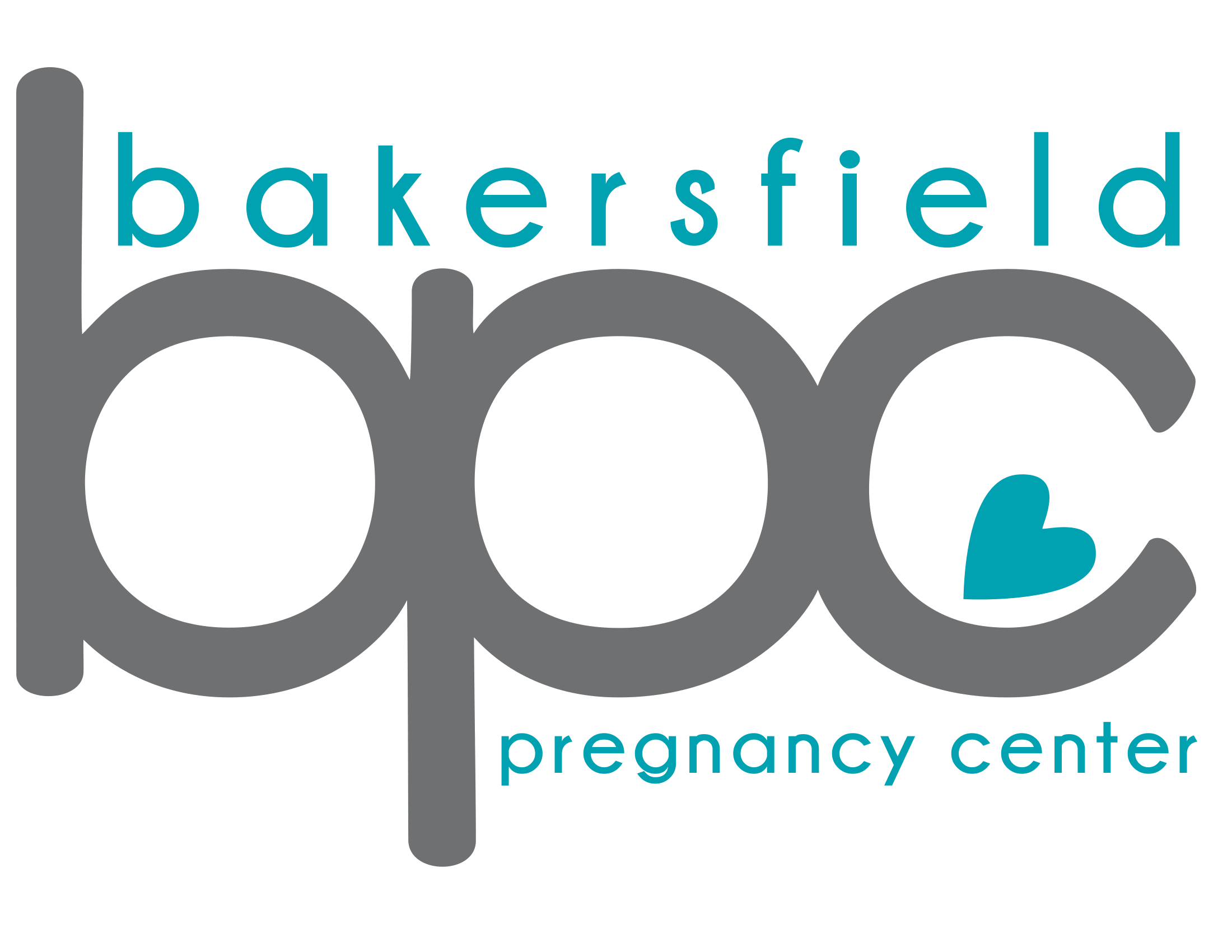An unplanned pregnancy can feel disorienting. If you’re sorting through your options, you’ll want to begin by addressing a few questions, including how far along you are, types of abortion, and laws in your state. Keep reading to learn about your abortion options!
How Far Along Am I?
Gestational age (how far along you are in your pregnancy) can be estimated based on the last menstrual period, but an ultrasound is the most exact way to determine it. An ultrasound is used to:
- Confirm that the pregnancy is in the uterus, not ectopic (a pregnancy located outside of the uterus)
- Determine how far along the pregnancy is
- Check for fetal heartbeat.
This is an important step in determining your options. An ectopic can be life-threatening and requires medical intervention, not the abortion pills.1
Call Bakersfield Pregnancy Center for a free ultrasound today at (661) 326-1907.
What are the Types of Abortion?
There are two types of abortion—abortion pills (or a medical abortion) and a surgical abortion. Your eligibility for either type depends on state laws and how far along you are in your pregnancy. Next, you need to consider the cost and risks.
What is the Abortion Pill?
The abortion pill is also called medical abortion, chemical abortion, RU-486, or at-home abortion. The FDA has approved the abortion pill for up to 10 weeks of pregnancy.2
The abortion pill involves two medications. The first medication, mifepristone, blocks the hormone progesterone. Without progesterone, the pregnancy cannot continue. The second medication, misoprostol, causes the uterus to cramp and expel the pregnancy.3
What are the Risks of the Abortion Pill?
The abortion pills can cause cramping and bleeding for up to four weeks.3 Complications after taking the first abortion pill (mifepristone) can include prolonged bleeding, an infection, an allergic reaction, or an incomplete abortion, which could require further medical intervention.3 Women should receive follow-up care to evaluate for any complications.
What is a Surgical Abortion?
In a surgical abortion, a provider dilates a woman’s cervix before removing the fetus using a curette to scrape out the uterus, a suction catheter, forceps, or other instruments. The type of procedure depends on the abortion provider’s preference, how far along a woman is in her pregnancy and the state laws.
What are the Risks of a Surgical Abortion?
Complications from a surgical abortion can include bleeding, infection, and pain. In some cases, the surgical abortion is incomplete, so an additional procedure is required. In rare cases, surgical abortions could perforate the uterus or surrounding organs.4 Multiple surgical abortions could lead to scarring within the uterus which could cause infertility in the future.5
What are the Abortion Laws in California?
Currently, abortion is legal up until viability in California.6 Viability refers to the point in pregnancy when a fetus is developed enough to survive outside the womb with medical help. Viability occurs at approximately 24 weeks of pregnancy.7
We strongly recommend receiving an ultrasound before an abortion. Click here to find out why.
How Much is an Abortion?
A medical abortion, or abortion pills, can cost between $500 to $950. Surgical abortions can cost between $500 to $1,150 in the first trimester and $570 to $2,300 in the second trimester.8 These costs often include fees for ultrasounds, blood tests, medications, and follow-up appointments.
Abortion Information in Bakersfield, California
As you consider what to do next, take one step at a time. Call Bakersfield Pregnancy Center at (661) 326-1907 for a free, confidential appointment. Our compassionate staff will provide you with the information you need so that you can make the best decision for you!
Please be aware that Bakersfield Pregnancy Center does not provide or refer for abortion services.
Sources
- Cleveland Clinic. (2023). Ectopic Pregnancy. Cleveland Clinic. https://my.clevelandclinic.org/health/diseases/9687-ectopic-pregnancy
- FDA. (2023, January). Questions and Answers on Mifepristone for Medical Termination of Pregnancy Through Ten Weeks Gestation. https://www.fda.gov/drugs/postmarket-drug-safety-information-patients-and-providers/questions-and-answers-mifepristone-medical-termination-pregnancy-through-ten-weeks-gestation?sm_guid=NTU1NzgyfDYzMDE1OTM2fC0xfGppbUBha2ZhbWlseS5vcmd8NTY4OTI4MXx8MHwwfDE5OTYwMDk4OHwxMDg2fDB8MHx8NTQ3NzI2fDA1
- Cleveland Clinic. (2024). Medical Abortion. https://my.clevelandclinic.org/health/treatments/21899-medical-abortion
- Mayo Clinic. (2023, November 7). Dilation and curettage (D&C). https://www.mayoclinic.org/tests-procedures/dilation-and-curettage/about/pac-20384910
- Yvonne Butler Tobah. (2022, August 4). Could an elective abortion increase the risk of problems in a subsequent pregnancy? Mayo Clinic. https://www.mayoclinic.org/healthy-lifestyle/getting-pregnant/expert-answers/abortion/faq-20058551
- Proclamation on Reproductive Freedom. (2019, May 31). Retrieved from https://www.gov.ca.gov/wp-content/uploads/2019/05/Proclamation-on-Reproductive-Freedom.pdf
- Breborowicz, G. (2001, January). Limits of fetal viability and its enhancement. U.S. National Library of Medicine. https://pubmed.ncbi.nlm.nih.gov/11753511/
- As advertised by abortion providers in June 2024.

